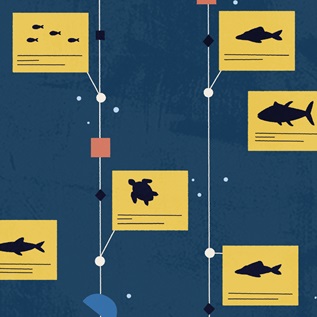Tiny Fish Endure Big Collapses—How We Can Help
This video is hosted by YouTube. In order to view it, you must consent to the use of “Marketing Cookies” by updating your preferences in the Cookie Settings link below. View on YouTube
This video is hosted by YouTube. In order to view it, you must consent to the use of “Marketing Cookies” by updating your preferences in the Cookie Settings link below. View on YouTube
Populations of tiny forage fish, such as herring and sardines, fluctuate naturally, and sometimes collapse. This can have harmful effects on the fishing industry and on larger animals (including whales, tuna, birds, and seals) that depend on forage fish for sustenance. But a 2014 study offers a clue as to how we might make such collapses less severe.
The study, led by Pew marine fellow Tim Essington, found that intense fishing makes collapses worse than would be expected from natural fluctuations alone. That means we may be able to make a big difference for fishermen and forage fish if we time our fishing right.
For details, visit http://www.pewmarinefellows.org.
Spotlight on Mental Health


One Minute Dive
MORE FROM PEW
Explore Pew’s new and improved
Fiscal 50 interactive
Your state's stats are more accessible than ever with our new and improved Fiscal 50 interactive:
- Maps, trends, and customizable charts
- 50-state rankings
- Analysis of what it all means
- Shareable graphics and downloadable data
- Proven fiscal policy strategies
Welcome to the new Fiscal 50
Key changes include:
- State pages that help you keep track of trends in your home state and provide national and regional context.
- Interactive indicator pages with highly customizable and shareable data visualizations.
- A Budget Threads feature that offers Pew’s read on the latest state fiscal news.











